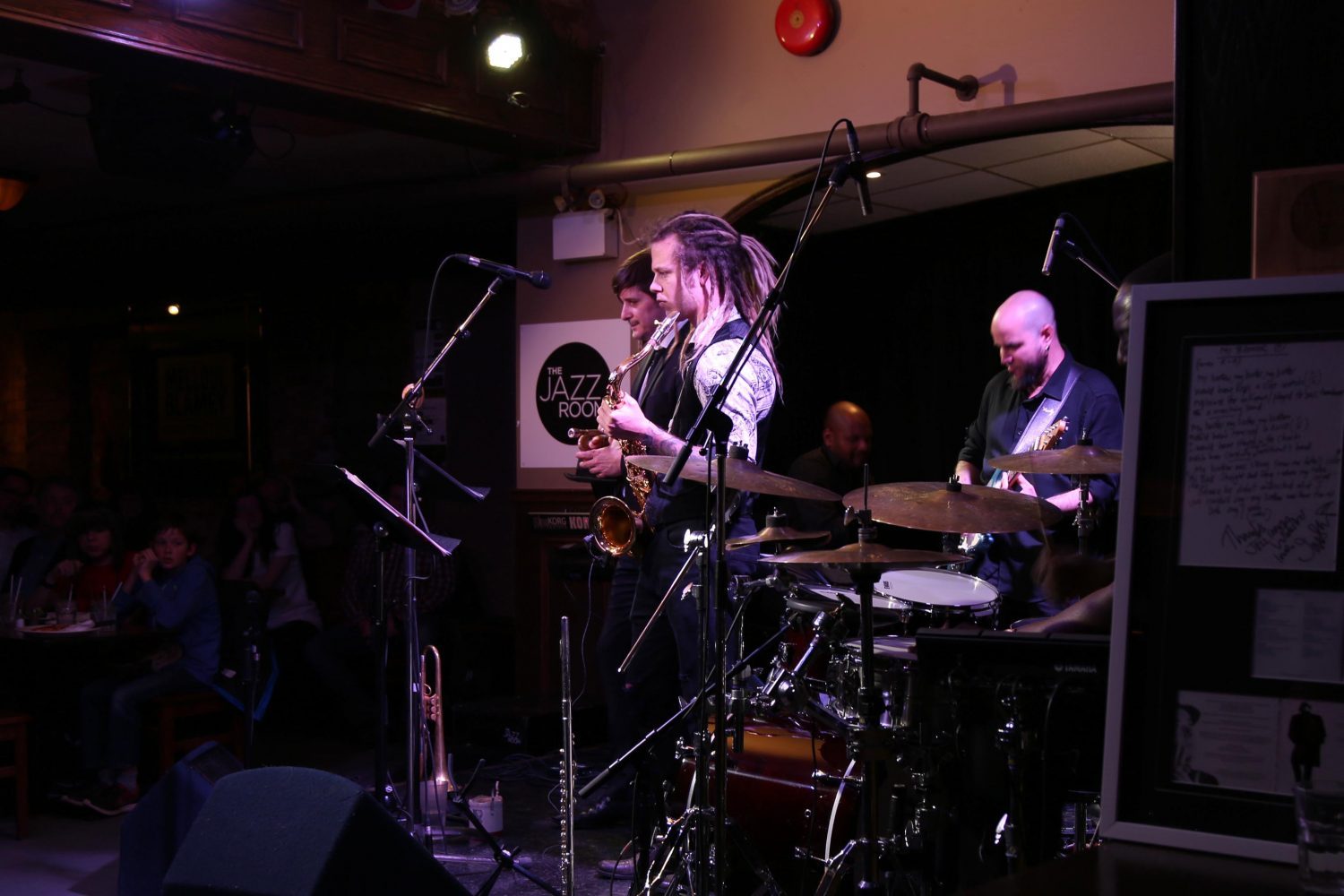How Jazz music is making its brassy return amongst younger crowds

Music tends to work in a continuous stream of evolution — ideas and rebellion compound with creativity and heart toward progressive ends.
When one hears the silky smooth drawl of Kenny G’s saxophone, it can be easy to forget that.
But jazz — real, authentic, inspired jazz — draws on something different. Something that transcends technology.
“With what we have available to us, we can make everything sound pretty perfect,” said Tim Moher, a retired music teacher and saxophonist in the group TM Jazz, detailing the inherent drawback of advanced in-studio techniques.
“The live [performance] really brings a whole new element … when you see a live band, you really get to know them so much more intimately.”
Fundamentally, jazz is orchestrated to allow for improvisation and conversation between musicians. The bass walks along with the beating snare drum, setting a conversational scene. A soloist then glides overtop, scaling through highs and lows, before passing the evolving melody throughout the group.
Jazz is experimental and, in the moment, unscripted. The idea that there isn’t a young audience that lives within those same parameters is ridiculous — the passion in the music remains alive, even if images of Miles Davis’s Kind of Blue or Dave Brubeck’s Take Five simply conjure up memories of ancient vinyl collecting dust in basements.
Kamasi Washington might be the most obvious hip, mainstream proponent of jazz in today’s scene. His 2015, three-hour long, appropriately titled record The Epic became especially prominent (and graced several year’s end best of lists) after Washington played and arranged on Kendrick Lamar’s acclaimed, jazz-influenced album, To Pimp a Butterfly.
Modern interpretations of a musical tradition are analogous to the conversation within any jazz piece: they evolve, taking bits and pieces of what has worked and pass it along into the creation of new melodies, ideas and transformations.
While it may be easy to file something like jazz music among some far-removed period in history, it needs to be recognized that the scene is alive and vivid and that residents of the K-W Region are extremely blessed with something like the Jazz Room.
“We didn’t have anything like the Jazz Room where we could go on a regular basis,” Moher said.
What makes the Jazz Room so exciting is its commitment to passion and energy. Where most venues urge performers to force their tonal assault overtop of the crowd, they enforce a no talking policy while the musicians are playing. While this could be viewed as an exclusionary measure, it’s honestly just plain thoughtful.
Isn’t it rude to chat with your friends and play on your cell phone in a movie theatre? The no talking policy isn’t about stifling conversation, it’s about creating an intimate space between the musicians and the audience. This keeps the genre alive and vibrant, rather than regressing into ambient territory.
Moher recounted seeing a wide range of ages in attendance at Jazz Room events, including a great deal of young adults. “It reminded me of when I was that age,” he said.
“I had a gentleman that was 18 years old that was playing with me … There’s a lot of good things happening with youth right now.”


